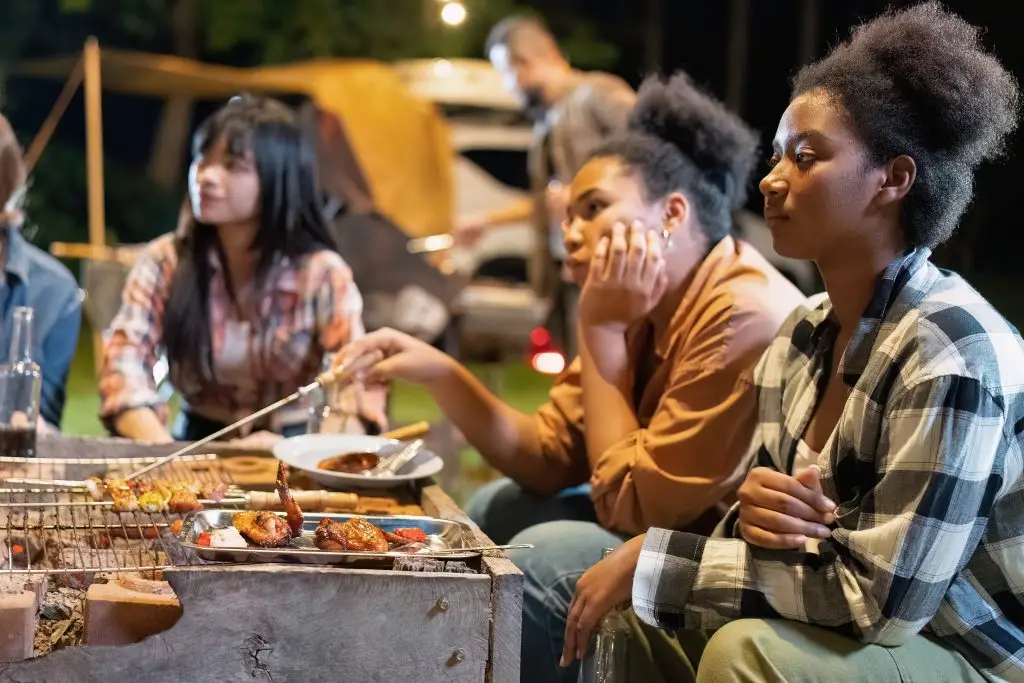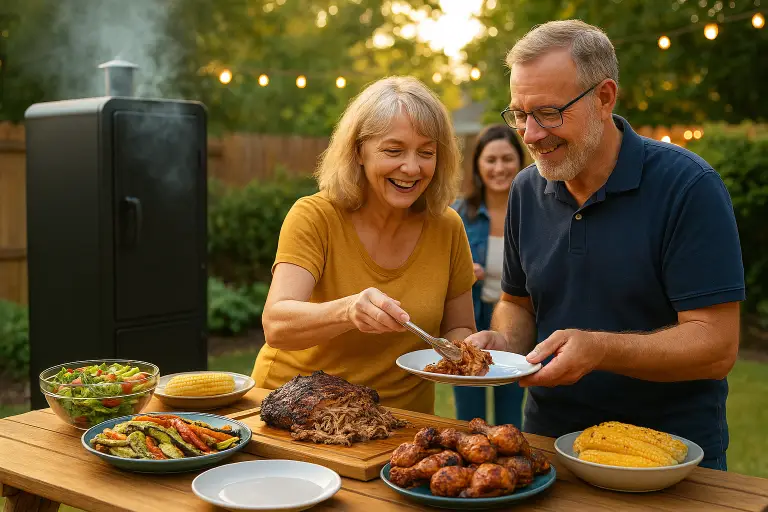Ever watched brisket cruise to 70°C, then sit there for hours? That’s the stall—evaporation cooling the surface faster than your pit can add heat. On an electric smoker (humid, gentle airflow) it’s common around 65–75°C internal. Here’s what’s happening, when to wrap (if at all), and how paper vs foil changes flavour, bark and timing.
In a hurry? Here’s the basics
The stall = surface moisture evaporates and cools the meat, flattening the temp curve around 65–75°C.
Wrap when the bark is set (colour deep mahogany, rub doesn’t wipe off): usually 72–78°C internal.
Butcher paper keeps bark and smoke character; speeds the cook a bit.
Foil is fastest but softens bark and can braise flavours if you add lots of liquid.
In electrics: keep the top vent fully open, go light on wrap liquid (or none), and re‑set bark unwrapped for 10–20 mins before resting.
What is the stall (and why does it happen)?
As fat renders and collagen begins to soften, surface moisture evaporates. That evaporation pulls heat away (like sweat cooling skin), acting as a temporary thermostat. Until the surface dries or you reduce evaporation, the internal temperature plateaus. Once through the stall, temp climbs quickly to “probe‑tender”.
Typical stall start (internal °C):
Brisket flat/pack: 65–75°C
Pork shoulder/butt: 63–73°C
Beef short ribs: 65–72°C
Doneness isn’t a number; it’s tenderness. Use temperature as a guide, tenderness as the decision.
Your options at the stall
Ride it out (cook “naked”)
Best bark and smoke; longest cook. Expect an extra 1–3 hrs.Wrap in butcher paper
Breathes a little → preserves bark, speeds the cook moderately.Wrap in foil (Texas crutch)
Near‑guaranteed speed‑up; steams the surface → softer bark.Raise pit temp slightly
From 110–120°C to 120–135°C through the stall. Useful if bark is pale.
Paper vs Foil vs Naked (at a glance)
| Method | Speed | Bark | Moisture | Smoke character | Best for | Risks |
|---|---|---|---|---|---|---|
| Butcher paper (unwaxed, food‑safe) | ⚡⚡ | Crisp/chewy, preserved | Good | Good | Brisket, pork shoulder, short ribs | If wrapped too early, bark can smear |
| Foil | ⚡⚡⚡ | Soft | High | Mild (steamy) | Behind‑schedule cooks, very lean flats | Pot‑roasty flavour, mushy bark if lots of liquid |
| Naked | ⚡ | Best bark | Moderate | Strongest | When time allows, bark‑first cooks | Long stall; can dry edges if airflow is harsh |
UK note: “Pink” butcher paper = uncoated, food‑grade. Baking parchment often has a silicone coating—avoid for wrapping.
When should I wrap?
Wrap on bark set, not just a number. Check for:
Colour: deep mahogany.
Texture: rub no longer wipes off; surface feels tacky but not wet.
Internal temp usually 72–78°C.
How to wrap (step‑by‑step)
A) Butcher paper
Lay out 2 wide sheets overlapping ~20 cm.
Place meat fat‑cap down (brisket) or most protective side down.
No liquid needed; if you want, add 1–2 tbsp (15–30 ml) of tallow or cider to the paper—optional.
Fold tight like a parcel; flip so seams face down.
Return to smoker seam‑side down. Probe through paper as needed.
B) Foil (Texas crutch)
Use heavy‑duty foil; double‑layer if thin.
Keep liquid minimal: 2–4 tbsp (30–60 ml) max. More = braise.
Seal tightly to reduce evaporation.
To protect bark, leave a small vent slit at the top or use the “boat” method (open top foil boat) once you’re past the worst of the stall.
Electric‑smoker tweaks (Masterbuilt, etc.)
Vent: Top vent fully open—you want clean draw and to avoid white, billowy smoke.
Water pan: In humid weather, run it half‑filled or dry to help bark; electrics are already moist.
Colour not there yet? Bump to 130–135°C for 30 mins before wrapping to fix pale bark.
Chip/wood feed: Small, frequent feeds. Avoid smothering the chip tray.
Finishing temps & resting (guide values)
Brisket: pull when probe‑tender (often 92–98°C).
Pork shoulder: 95°C and probe‑tender.
Short ribs: 95–98°C and jiggles like jelly.
Rest: Vent 5 mins to stop carryover, then hold 60–120 mins in a warm box/cooler (wrapped). Slices stay juicier, fibres relax.
Troubleshooting
Still stuck after 3+ hrs: Raise pit to 125–135°C, switch to paper/foil, check you’re not drowning it in liquid.
Soggy bark: Wrapped too early or too wet → unwrap for the final 10–20 mins to re‑set bark.
Grey, pot‑roasty flavour: Too much liquid in foil or vent closed → reduce liquid, open vent.
Bark won’t set: Cabinet too humid; water pan full; sugary rub at high temps. Go drier, reduce sugar, and give it more naked time before wrap.
Bitter smoke/white clouds: Overloaded chip tray or vent closed. Thin blue smoke is your target.
FAQs
Is wrapping always necessary? No. It’s a tool to manage time and moisture. If you’ve time, cook naked and skip the wrap.
Can I reuse butcher paper? If it’s soaked with fat, bin it. For a second rest layer, use fresh paper or a towel.
What is the “boat method”? Wrap the bottom and sides with foil, leave the top open. You protect the underside from drying while keeping bark set on top.
Does paper let in more smoke after wrapping? A little. It breathes, so flavour stays brighter versus fully sealed foil.
Next steps
Learn to read smoke: Thin Blue Smoke vs White Billow.
Fix pale or soft bark: When Bark Won’t Set (humidity, sugar, spritz timing).
Get your targets right: Probe Temps in °C + Resting Times.
Technique deep‑dive: 3–2–1 Ribs on an Electric Smoker.
Flavour planning: Wood Pairing (UK).
Free mini‑guide (PDF): Gluten‑Free BBQ Rubs & Marinades (UK) — hidden gluten traps, safe swaps, 5 rubs + 4 marinades. Get it on our GF page.


